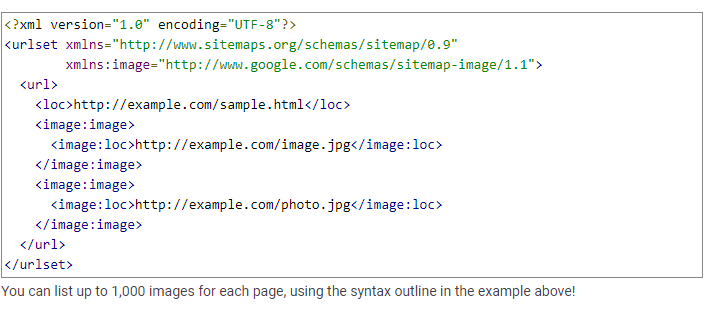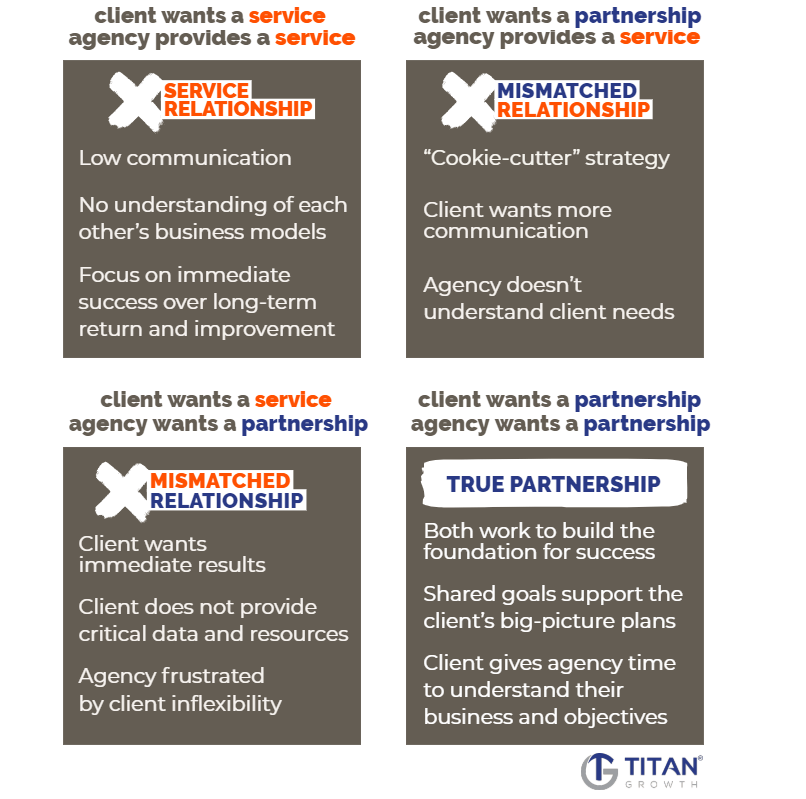Instagram is the highest-engagement social media platform.
Each individual audience member is far more likely to engage with your content on Instagram than other platforms, which means that smaller audiences are still valuable.
The real question is, how do you get and keep those audience members on Instagram?
Successful Instagram accounts thrive on creative visuals. Because of this, brands can craft distinctive identities and successfully target specific customer personas, not through Facebook-style audience targeting but through self-selection and carefully curated content.
Many marketers dismiss Instagram on the grounds that it’s only for Gen Z and younger millennials. The truth is that Instagram’s appeal and demographics are growing, and older generations can also be reached with the platform. After all, the effects of amazing visuals aren’t limited to any one age group.
Here are three impressive examples of brands who have built their identity and customer loyalty with smart and strategic use of Instagram.
There’s a few common themes in the examples below. Read through and see if we noticed the same things about how to build a brand on Instagram!
Impressive Example: @titosvodka & @vodkafordogpeople


Tito’s Vodka has separated its Instagram presence into multiple accounts—the main @titosvodka account represents the brand, while @vodkafordogpeople highlights some of the brand’s most important social causes: rescuing dogs and supporting nonprofits that benefit animal welfare.
What’s impressive about the Tito’s Vodka Instagram?
The two highlighted accounts have very different, but complementary, roles in branding and loyalty-building.

What is @titosvodka for?
- Building trust through curated content: @titosvodka typically posts in response to holidays, relevant popular hashtags, or to offer entertaining and useful suggestions.
- Engagement through practical suggestions and effective writing: @titosvodka posts recipes for interesting drinks using their vodka.
- Highlighting heritage and brand values: the account showcases the brand’s authentic Texas small-business roots.
- Specifically for fans of the brand.

What is @vodkafordogpeople for?
- Consistency: @vodkafordogpeople uses emotional cues and demonstrates a commitment to social responsibility in every post.
- Outreach: even people who aren’t fans of Tito’s can be drawn in with cute dog pictures.
- Engagement: @vodkafordogpeople posts a profile of a Tito’s fan’s pet every other day and tags their owner in the description.
- For dog fans and brand fans.
These accounts together showcase something critical about the Tito’s Vodka brand without pushing it in their audience’s face. What are they doing?
- Demonstrating brand values and charity in an authentic way.
- Choosing a cause and showing commitment in a way that appeals to a passionate group of potential customers.
Impressive Example: @letterfolk
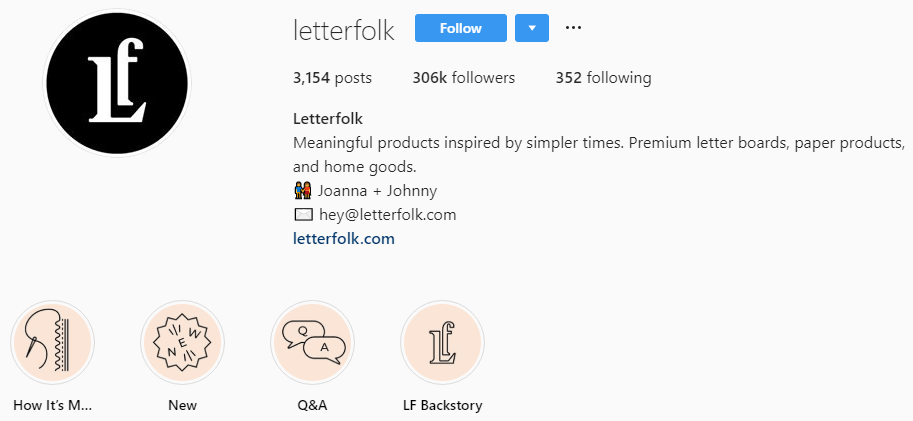
What’s impressive about the Letterfolk Instagram?
Letterfolk has built its brand on relatable, self-aware humor, straightforward acknowledgment of the people behind the brand, and genuine community connections.

Letterfolk’s brand identity is so strong that they no longer even need to create their own content. The majority of photos on the account are from lifestyle accounts or companies in the same niche—people who actually want Letterfolk to repost their content, because that gives exposure and confirmation of their content’s value.
Letterfolk is able to do this because it developed its own niche. By crafting its own style—humorous, self-deprecating letterboard messages in a family lifestyle setting—it created a style which others enjoyed, followed, and began to replicate themselves.
The brand directly participates in a small-business ecosystem of like-minded, but not competing, companies and lifestyle blogs. Their target customer persona is established and captured; they focus on taking advantage of it.

The manicured, minimalist lifestyle ideal.

The self-aware reality.
Their images utilize both aesthetics and the targeted, entertaining messages that resonate with people in their niche. Yes, Letterfolk is selling itself, but it’s not necessarily selling the dream of being organized. It sells participation in a community that accepts and celebrates its own shortcomings. Because Letterfolk created that community, it comfortably resides in the epicenter, where engagement is fruitful and exciting.
Impressive Example: @cleopatrasbling
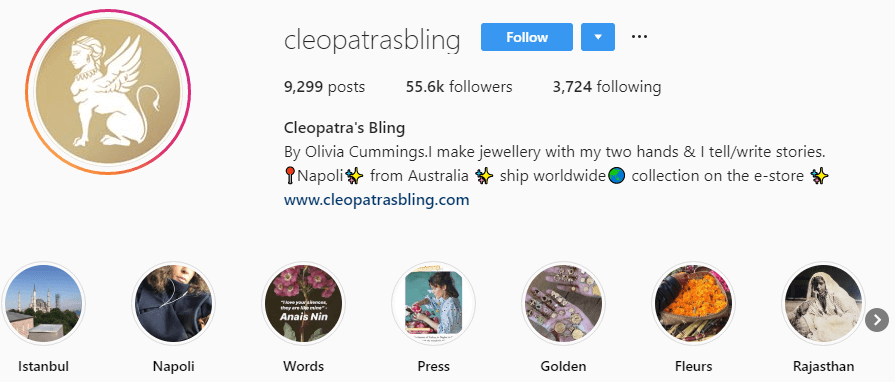
What’s impressive about the Cleopatra’s Bling Instagram?
The account creates a clear and consistent identity through marrying history, jewelry, and travel blogging.
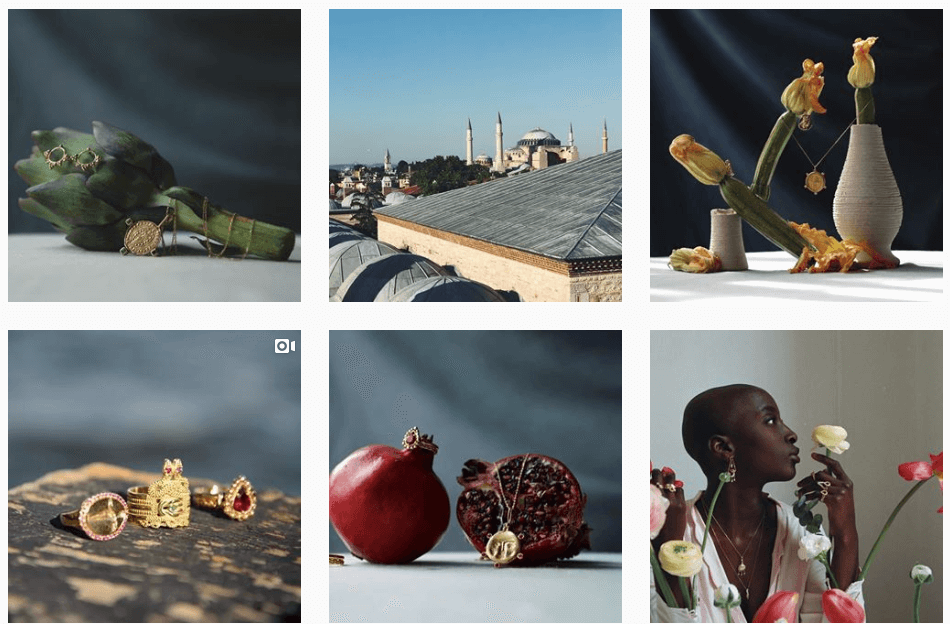
Jewelry is typically displayed on fruit or other visually interesting food. We love this, but what makes it so compelling?
In addition to being individually beautiful, every picture communicates multiple ideas and feelings:
- Expensiveness.
- Delicious food.
- Luxurious goods.
- A sense of historical exoticism.
- The interesting juxtaposition of dissimilar items.
This final element ties everything together.
The brand compounds a sense of exoticism by combining fine jewelry with fruit in a way that makes the products seem like ancient artifacts.
Think of ancient Egyptian royalty being fed grapes and fanned by their attendants. Seems over-the-top, I know, but you have a clear picture in your head of what I’m describing.
The page utilizes on-brand writing that takes advantage of this collective nostalgia—this feeling of decadent, unsurpassed abundance.
Takeaways
Building a brand on Instagram can be successful without a huge budget, but that doesn’t mean it’s quick or easy. Contact us if you need help!
Instagram Success Themes
- Persistence. Persistence. Persistence.
- Quality images and the ability to curate well-composed content.
- A clear brand identity and understanding of its key elements.
- Understanding how to target distinct customer personas.
- A consistent aesthetic theme complemented by a consistent tone across all written content.
- Creating a sense of community and seeking callouts from other accounts in similar niches.
- Direct engagement with your audience, whether as a person or as a personality.
- Being open-minded and testing creative strategies to find your niche.


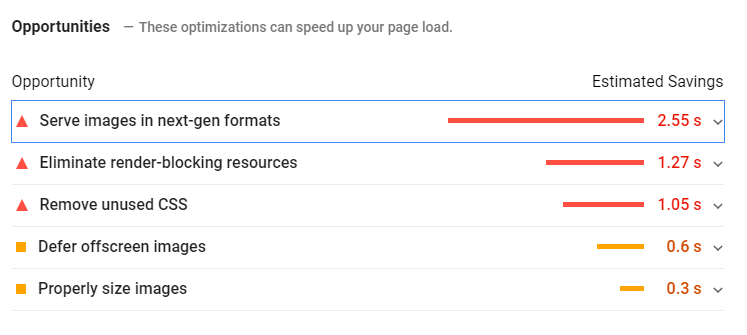

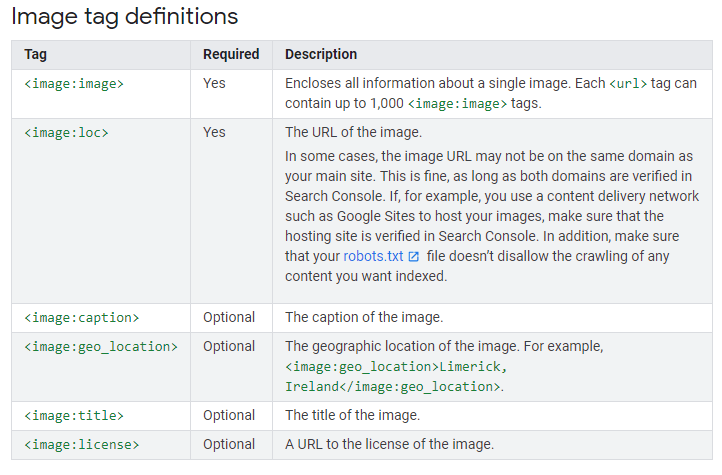
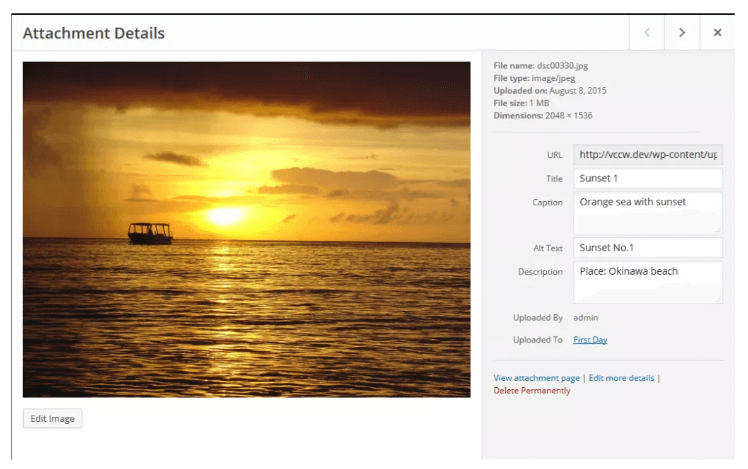
 For Mac users,
For Mac users, 